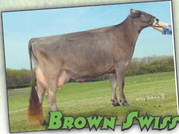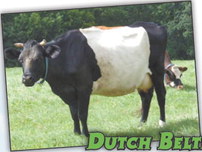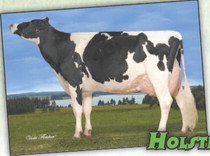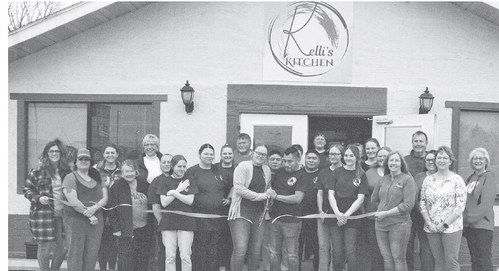What kind of cow is that?
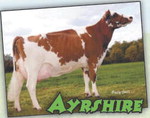

June is dairy month in Wisconsin, and at the heart of dairy is the herd of cows.
Cow genetics are a passion for many dairy farmers. Across the world there are hundreds of different types of cows. While all of them may have come from similar root stock, centuries of breeding for different attributes and manner has created a vast number of different, highly specialized types of cows.
While all cows will give milk when lactating, only a relatively small number of breeds are routinely used for milk production in the United States. Others have different Ayrshire — The first cows of this breed were thought to have arrived in New England from Scotland’s County Ayr in the early 1820s. Well adapted to rocky farms and harsh winters, the Ayrshires thrived, eventually spreading to dairy farms all across the country. Average output is 17,000 lbs./7,711 kg (about 2,000 gallons) of milk per 305 day-cycle/year, with 3.9 percent butterfat, 3.3 percent total protein.
Brown Swiss — Believed to have originated in the Alps of Switzerland, these hardy animals are tolerant of harsh climate and produce large quantities of milk, close behind the Holsteins. Officially recognized as a breed in the U.S. in 1906, the first small group of cows arrived here in 1869. Though few animals were actually imported, this hasn’t stopped their steady growth in number, and today, the Brown Swiss are very important members of the dairy industry. Average output is 21,000 lbs./9525 kg (about 2,450 gallons) of milk per cycle with 4.0 percent butterfat, 3.5 percent total protein.
Ayrshire
purposes, from providing muscle for farm tasks to being raised for meat production.
While some experienced dairy farmers can identify a particular cow in a herd by the shape of the black and white splotches on their coats — which are as unique as fingerprints — most of the rest of us can’t tell a Guernsey from an Ayrshire.
With the following handy guide to common dairy breeds in Wisconsin, you can impress your friends with your knowledge of dairy cows: Dutch Belted – Average size ranges from 900-1,500 lbs, with bulls weighing as much as 2,000 lbs. Cattle have a base color of either black (most common) or a dusky red, and the breed’s most distinguishing characteristic is the wide “belt” of white around its middle, placed between the shoulders and the hips. As a dairy breed, Dutch Belts produce with greater efficiency on grass and forage than the average breed, and intensive management practices are not required. Cows can produce 20,000 lbs of milk per year. Because of the stockier frame of the breed, crossbreeding will produce a higher beef yield than through the average dairy cow, rendering the Dutch Belted a viable all-purpose breed. The breed was developed in Austria and Switzerland but became popular with the Dutch who bred the similar belted pattern across several animal species.
Dutch Belted
Holstein— Originally bred in Northern Germany, and the North Holland/Friesland regions of the Netherlands. These familiar black and white cows were selectively bred to make large quantities of milk from the area’s most abundant natural food source — grass.
First brought to the U.S. in the late 1850s, their ready adaptability, and economic production of large volumes of milk relative to other cows, has made them common on dairies worldwide. Figures for average milk output range up to 28,000 lbs./12,700 kg (about 3,260 gallons) per cycle, with 2.5-3.6 percent butterfat, 3.2 percent total protein. According to the Holstein Breeders Association, top producing Holsteins milked three times a day have been known to produce over 72,000 pounds of milk in 365 days.
Holstein
Brown Swiss
